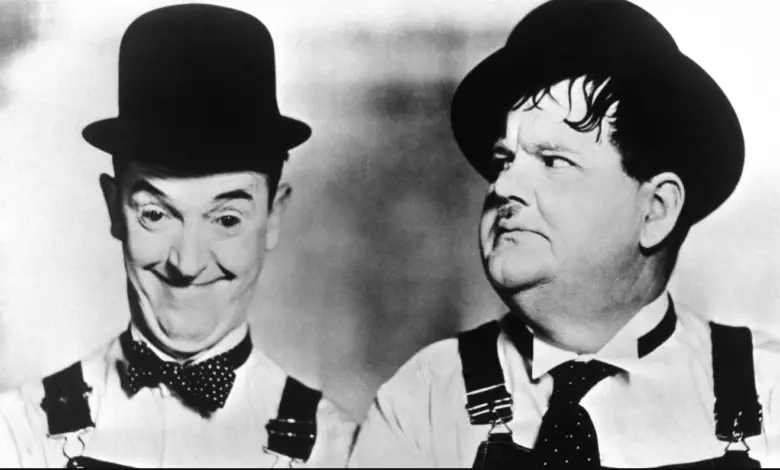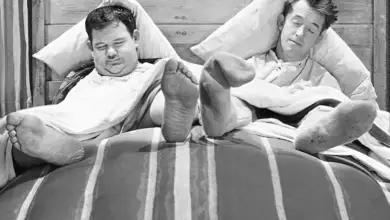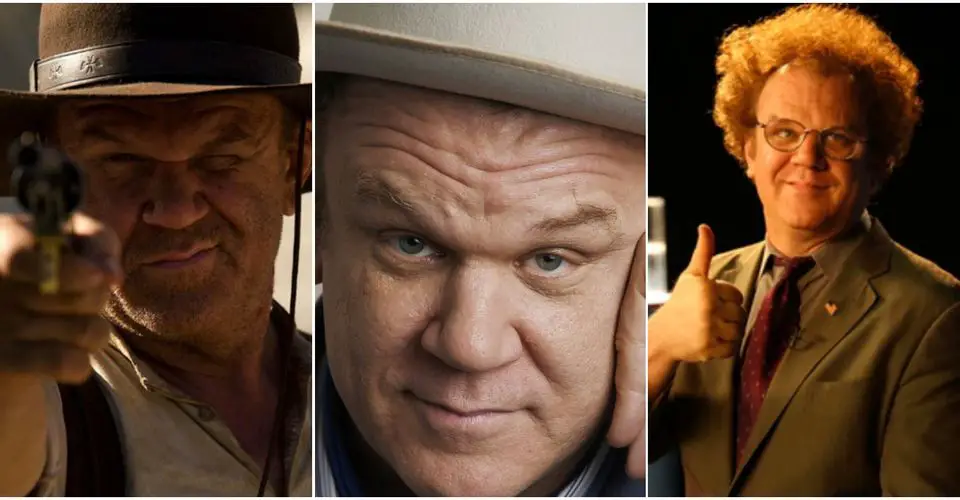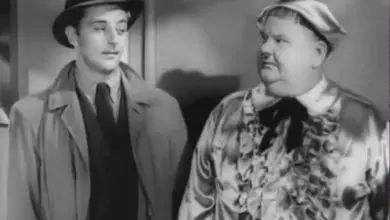They Fought the Law and the Law Won. Laurel and Hardy in Pardon Us (1931).

Pardon Us (1931) is regarded as the first “feature length” Laurel and Hardy movie. This was not really a deliberate change of direction. Pardon Us apparently began life as a short that sort of got out of hand, a film that could not be edited down to anything resembling a 2 or 3 reel “short”.
There’s a very nice bit of film editing at the beginning. We’re still subject to Prohibition in 1931, and the boys are standing in front of a shop window, making a shopping list of ingredients in quantities that can only denote the illegal manufacture of alcohol. The very next shot shows them being escorted to prison. Stan had, apparently, tried to sell beer to a cop.
A series of extended sketches emerge while they’re doing time. A running gag consists of Stan’s dental cavity which ensures that his conversations are interspersed with insulting raspberry type whistling noises. The boys soon run the gauntlet of familiar Stan and Ollie “heavy” – Walter Long. There is an extended schoolroom sketch that employs James Finlayson as an exasperated schoolteacher. There’s no particular reason why this scene should have to have a prison setting, but there it is. We’re just happy to have Finlayson on board. Also there is a recycling of some dentistry jokes from Leave em Laughing (1928)
Towards the end of the film, the boys sort of accidentally quell a prison riot, leading to their early release at the discretion of Wilfred Lucas’ somewhat hysterical warden. The final joke is a good one and is well prepared for.
One thing that Stan and Ollie feature films were able to accommodate to a greater extent was of course song. And dance. Make that two things.
Oliver Hardy’s rendition of “Lazy Moon” in this film is so very lovely, and Stan’s soft shoe dance to it is so effective that were it not for the fact it’s performed in blackface it would be a famously anthologised and endlessly replayed sequence.
It’s impossible to watch white people black up “innocently” any more. The long legacy of blackface is far too bitter and complex. This prison is set somewhere in the deep south, within reach of plantations where African American pick cotton in the fields under conditions which appear not to have changed significantly since slavery. The very fact that this world is depicted so brazenly and without commentary makes Pardon Us (1931) a fascinating historical document.
This film uses Stan and Ollie blackface not as a way of making any kind of generalisation about African Americans, but only as a very inefficient disguise, as another way of getting the boys into trouble. So these plantation workers are not subjected to any real “minstrel” type comedy. Stan and Ollie are in blackface because they’re on the run, not because they’re trying to mock or abuse anybody.
The blackface section, meanwhile, coincidentally offers a record of complete segregation, a world where it is assumed that the colour of your skin is an absolute determinant. They are eventually caught while attempting to repair the Warden’s car as he drives through a plantation. Though their disguise seems ludicrous and obvious to the audience, it’s clear that the Warden does not “see” black people in individuated terms at all. He only sees Stan and Ollie when their white skin is exposed.
Watching the blackface scenes feel strange and disconcerting and invites serious discussion. These scenes are not to be compared with the awful awful racist joke in Great Guns (1941) – a joke that depends absolutely upon a consensual recognition of racial inferiority and which is only survivable if you keep telling yourself that Great Guns is not really a Laurel and Hardy film because Stan Laurel had no creative impact or influence on the movie.
All in all, when it came to making features, Stan and Ollie would do a whole lot better than Pardon Us. But they would also do a whole lot worse.





